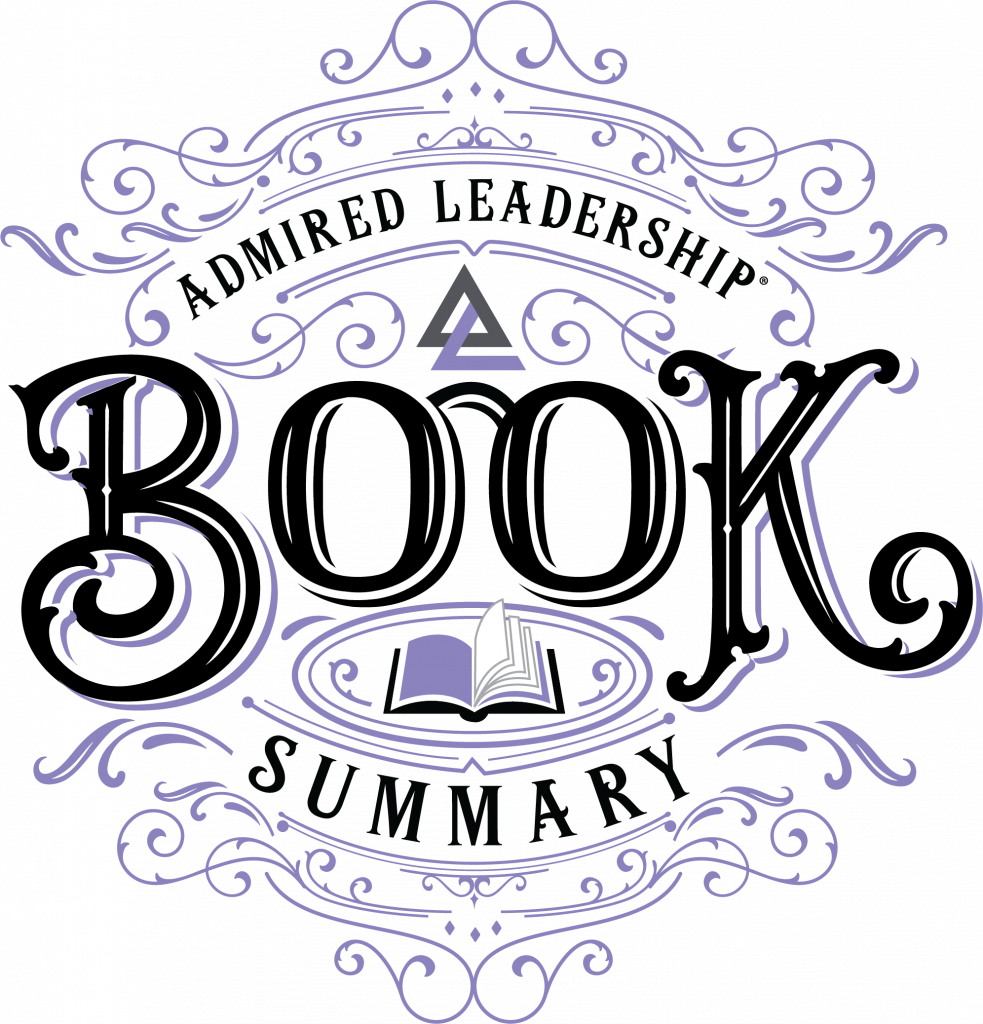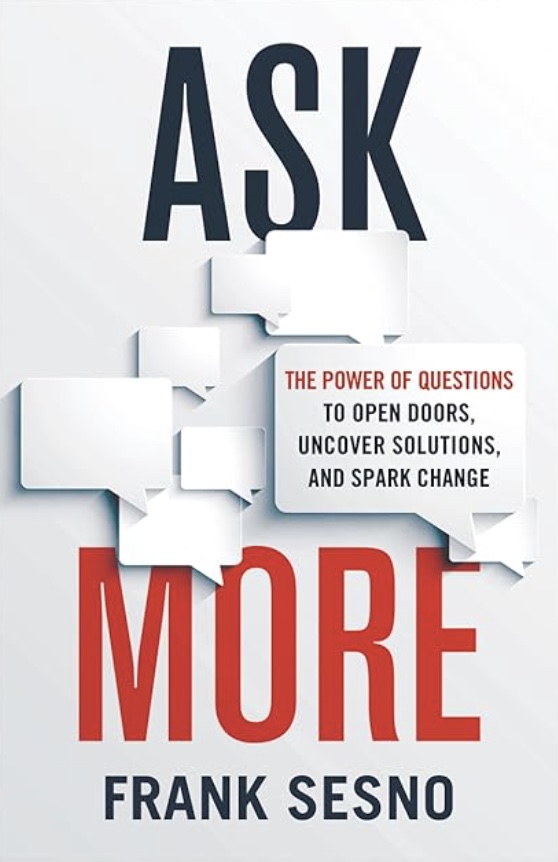“Connect passion to mission and you can generate excitement and meaningful involvement” (p. 121).
Key Points and Concepts
Deepen Understanding & Clarify Objectives
Plot your question trajectory with your objective in mind. Anticipate what it’ll take to get there” (p. 78).
When approaching a new challenge in any form, Sesno offers a checklist to help clarify decision making and provide a framework.
• Get the big picture: Define the challenge and articulate your goals. Why does it matter?
• Know what you’re up against: “Recognize you have a worthy opponent […] Ask what your opponent can dish out and what you’re willing to take” (p. 29).
• Define your plan: What tactics will you use? Always have a back-up plan.
• Challenge yourself: Look at your plan from different angles and anticipate alternate outcomes.
• What haven’t you thought of: What could go wrong?
• Define success: What will success look like? What will it take and at what cost?
The most successful people harbor informed curiosity. These leaders have a solid foundation of information that helps them approach a situation and navigate it deftly, armed with the right questions.
Strategy & Structure
The more a dialogue touches on shared goals, the more streamlined and engaging the questions will be. Sesno encourages readers to “connect passion to mission and you can generate excitement and meaningful involvement” (p. 121).
Form questions that will reflect how people think, as well as what they know.
“Adopt a strategy that creates the event you want” (p. 177). Sesno suggests writing a list of questions for every situation and make sure each is answered thoroughly. Use active listening to zero in on details that can lead to follow-up questions.
When Bill and Melinda Gates committed to plunging their resources into fighting malaria, their foundation produced the “Strategy Lifecycle.” This handbook organized questions into a series of phases:
• Lookback & Scoping: A way to look at history and accurately define the dimensions of the issue.
• Strategy Choice: Questions that ask what is specifically needed to accomplish the mission.
• Execution Plan: Sets the exact parameters of the plan and exposes the risks (p. 31).
Creating a Narrative
History is part of every narrative. Inquiring about history – a person, a series of events, a corporation – informs our questions. Strategic questioning should be employed to “learn from previous experiences and define the history and dimensions” before taking the next step (p. 30).
Barry Spodak, an expert in threat assessment, trains FBI and Secret Service agents in questioning tactics aimed at identifying potential threats to the country. He teaches his students to ask questions in a way that elicits a story, rather than yes / no, or accusatory questioning. Spodak reminds them that “the human brain is wired for stories. It’s how we learn and how we remember. It’s how we engage and pass along our experience and our history” (p. 71).
In 1962, President John F. Kennedy engaged the nation during the Cold War when he challenged his audience “to think outside of their planetary constraints” (p. 100). By addressing the country he crowdsourced, so to speak, and asked the nation to consider its common goal. Kennedy vowed that winning the space race “will not be one man going to the moon […] it will be an entire nation” (p. 100). He appealed to the country’s sense of destiny by asking it to imagine without limits. In this way, Kennedy employed two key facets of creative and mission questioning:
• Time Travel: Put questions in future tense. We’ve made it to the moon. What did we do to get here?
• Invoke Imagined Reality: A type of role-playing. Imagine a world where we’ve made it to the moon. Who did we send? What does it look like? What’s next?
Legacy questions ask us to reflect on ourselves and touch on themes of spirituality, gratitude, finding meaning in action, lessons learned, and lives touched. If we start asking ourselves early enough in life and check in with ourselves along the way, these questions shape the way we make decisions, interact with one another, and ultimately, the course of our lives.
Thoughtful Questioning Creates Strong Leadership
Sesno asserts that the most successful people in every field are the most inquisitive. These leaders have deftly honed their curiosity to ask, listen, act, and ask again in a way that leads them and those around them to success.
Strategic leadership bears in mind the big picture, the core values, and the long-term goal by continuously questioning the “stakes, opportunities, costs, consequences, and alternatives” (p. 28).
Conversation leadership is defined as “[creating] an environment that is inclusive, interesting, and dynamic” (p. 177). Posing questions that mirror this welcoming environment invites others to be vocal and uninhibited, while stimulating and shaping ideas.
Debbie Bial runs the Posse Foundation, which identifies and sponsors students who exemplify extraordinary talent and leadership potential. Bial’s vetting process for Posse candidates is “structured around stimulating and often intensely reflective questions. She builds communication skills and leadership qualities into the scholars’ experience by constantly asking them about themselves and the world around them” (p. 201).
Throughout Ask More, Sesno consults leaders about the questions they ask themselves to drive their practice. Former San Francisco mayor, Gavin Newsom, said that when he was faced with adversity, he checked in with himself, asking:
• What is this about?
• What are our values?
• What was I elected to do? (p. 113)
Sesno asserts that “no answer is ever complete because after your ‘Why?’ is answered, it breeds an infinite number of ‘Whys’” (p. 142). As humans, we are hardwired to be inquisitive for the sake of understanding and progress. With the help of “Ask More,” we can do so with a clear objective and a toolbox of questioning practices.
Sesno, Frank (2017). .Ask More: The Power of Questions to Open Doors, Uncover Solutions, and Spark Change.
New York: American Management Association.

“Connect passion to mission and you can generate excitement and meaningful
involvement”.
“Adopt a strategy that creates the event you want.” Sesno suggests writing a list of questions for every situation and make sure each is answered thoroughly. Use active listening to zero in on details that can lead to follow-up questions.
“Conversation leadership is defined as “[creating] an environment that is inclusive, interesting, and dynamic.” Posing questions that mirror this welcoming environment invites others to be vocal and uninhibited, while stimulating and shaping ideas.”
“Sesno asserts that “no answer is ever complete because after your ‘Why?’ is answered, it breeds an infinite number of ‘Whys.’” As humans, we are hardwired to be inquisitive for the sake of understanding and progress. With the help of “Ask More,” we can do so with a clear objective and a toolbox of questioning practices.”
